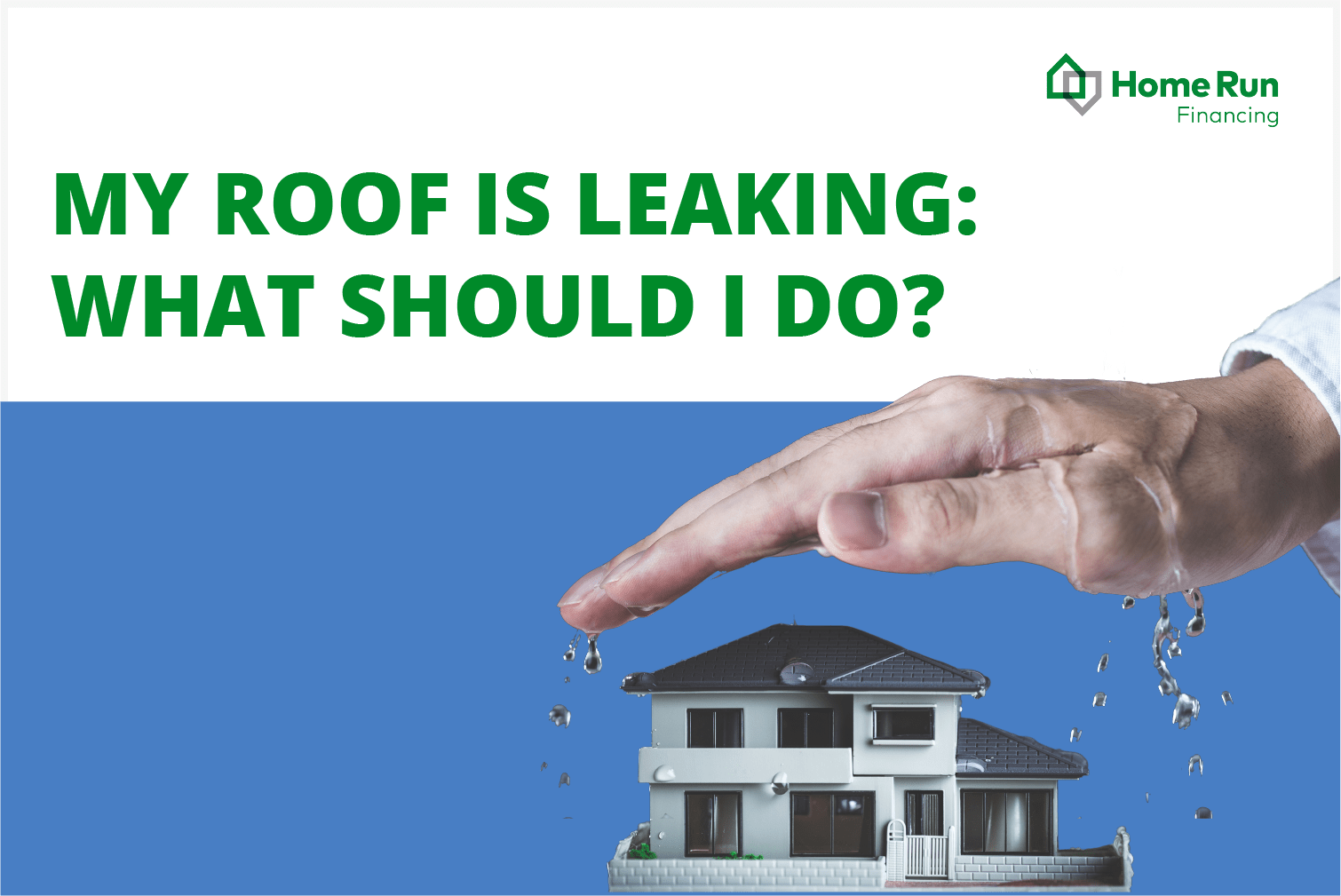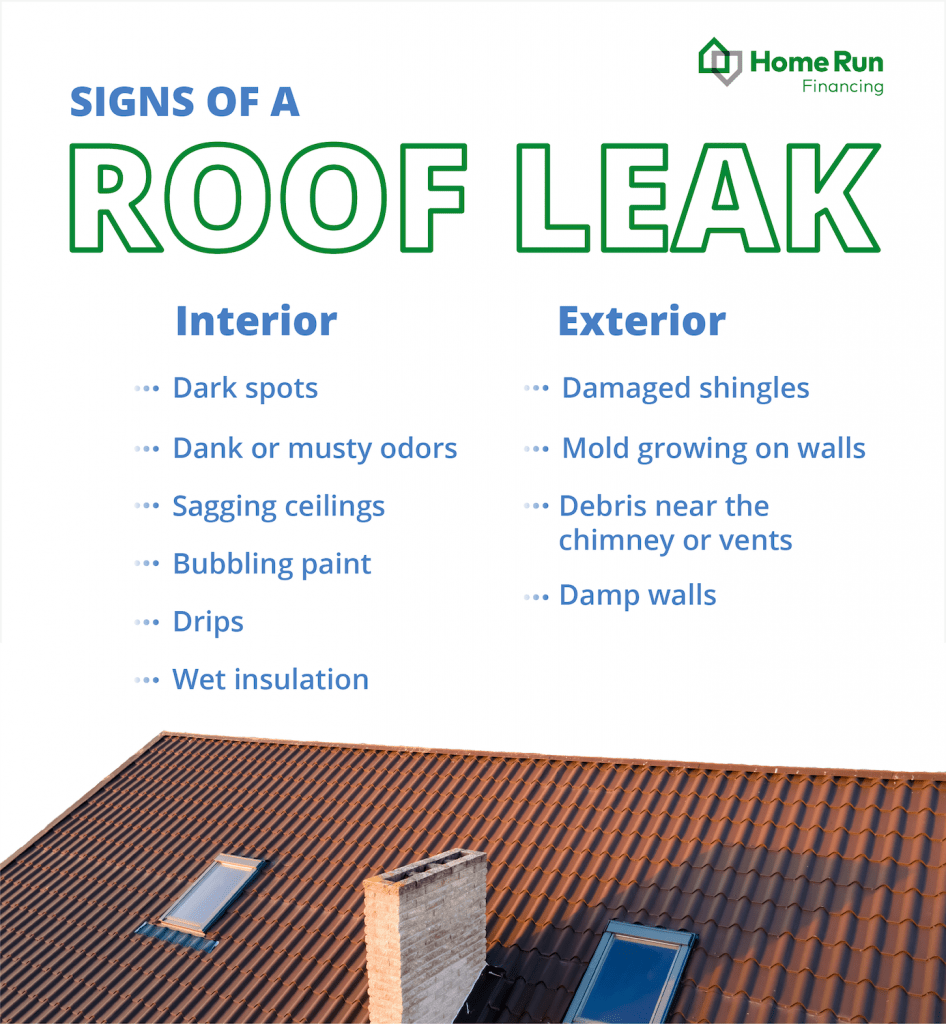
My Roof Is Leaking: What Should I Do?
Roof leaks can be a homeowner’s nightmare — and they’re as common as they are worrying. A telltale water stain might be a small problem or a major roof repair issue, and it’s hard to tell without a professional roof inspection. Will you need to replace just a few shingles or need a whole new roof? Where there’s water, there might be toxic mold growth and other expensive work to be done.
Here, we’ll list the common signs of a roof leak, walk you through what to do about it, and even get into how you can afford to fix it.
What should you do if your roof is leaking?
- Step 1: Locate the roof leak.
- Step 2: Contain the excess water.
- Step 3: Prevent additional water damage.
- Step 4: Reach out to a contractor.
- Step 5: Call your insurance company.
Is a leaking roof an emergency?
How long can you leave a leaking roof?
Covering your roof repair expenses
What should you do if your roof is leaking?
When you see any signs of a leak, it’s important to take action immediately. Ignoring the warning signs can end with expensive repairs — and a leaky roof will not go away.
Step 1: Locate the roof leak.
Before you can take any action, you need to identify the telltale signs of a leaking roof, both inside and outside your house.

Interior signs of a roof leak:
- Dark spots. The first sign of a water leak is usually dark spots on the ceiling. Water spots usually look like splotchy brown stains and can be anywhere on the ceiling.
- Dank or musty odors. Water means mold, and mold releases a distinctive musty odor. If any room in your house doesn’t smell fresh, you may have a water leak somewhere. Mold can be detrimental to your health, so you need to take it seriously.
- Sagging ceilings. Water pooling in the ceiling will cause the ceiling tiles to swell, buckle and sag.
- Bubbling paint. Water can run down the walls and cause your paint to bubble away from the walls like blisters.
- Drips. It’s rare, but an active leak can lead to rain inside your house.
- Wet insulation. Check the attic insulation. It should never be damp.
Incoming water isn’t fun. Break out a bucket and call a professional roofing contractor. You’re definitely going to need help.
Note: Leaks can travel. The water can run far from the original source of the leak and pool anywhere on your entire ceiling.
Exterior signs of a roof leak:
- Missing or damaged shingles. Any natural disaster can be hard on your roof. After a hail storm, a hurricane or even a hard rain, you may lose shingles. Look for missing shingles on the roof or the lawn, or for signs of loose materials on the roof.
- Mold growing on walls. There are all kinds of different types of mold and mildew. It might be thick and black, have a delicate pale green color or look like a white, bumpy rash. If you suddenly have a growth you’ve never seen before on the outside of your house, it may indicate a leak.
- Debris near the chimney or around vents. Debris piling up around a roof feature may be a sign that shingles are peeling and curling, forming a block where trash piles up.
- Damp walls. If the weather is dry and your outside (or inside) walls are damp, the water must be coming from somewhere.
Step 2: Contain the excess water.
You may not be able to find where the water is entering your home; that can be tricky. But you can take steps to mitigate the water coming in. Put a bucket under the leak and use a knife to puncture any blisters or sagging areas. Drain the excess water and dry the area as well as you can.
Step 3: Prevent additional water damage.
If you can locate where the water is coming from on the roof, spread a waterproof tarp over the damaged area and use a heavy-duty stapler to staple the edges down. If possible, drape the edge over the peak of the roof to minimize opportunities for water to get under the tarp.
Inside, move any furnishings and wall art out of the wet area. Unplug any appliances, and if possible, turn off the electricity to that section of the house. Use a fan to dry any carpet and keep the air conditioner on high to prevent mold growth.
Step 4: Reach out to a contractor.
Tracking down leaks in a roof is difficult; it’s best to get a trained professional who knows exactly what to look for and how to handle it. You should make sure that they’re licensed and insured. Home Run Financing can help you find a certified contractor who’s fully screened and trained and will repair your roof to your satisfaction. They don’t receive payment until you give verbal and written approval that the job is done right.
Step 5: Call your insurance company.
Once you know what you’re up against, find out how much your insurance will cover. Your roof’s age and the cause of the damage will come into play. If your roof is more than 10 years old, you may wind up picking up a lot of the cost. PACE financing can help you with the difference. The process is quick and easy, and because it’s based on home equity, you can qualify without good credit.
Is a leaking roof an emergency?
Leaky roofs are serious business. Water can cause structural damage, ruin your home’s interior and furnishings and make your family sick. It may not require the same immediate attention that a house fire would, but water damage can be devastating to a home. And it only gets worse over time.
How long can you leave a leaking roof?
You can’t let a leaking roof go unfixed for long. Try to get a professional inspection ASAP. The cost of ignoring a leak can grow as items add up: new insulation, new drywall, new ceiling and flooring, electrical work, new appliances and lighting that shorts out and maybe even a new roof.
Mold can cause serious respiratory illnesses, especially in children. In extreme cases, mold exposure can be fatal. Hot, humid states like Florida are especially prone to mold. Fortunately, you can get PACE financing in Florida and other states to help you cover leaky roof emergencies.
Covering your roof repair expenses
Being faced with a costly emergency home repair can be nerve-wracking, but the news isn’t all bad. If you need to replace the roof, this may be a good time to get a more durable, low-maintenance hurricane-proof roof.
And you shouldn’t let concern about payment delay much-needed work. Many homeowners are turning to PACE financing as an attractive option. This type of financing lets you use your home equity to finance a new roof as well as other expensive home repairs. Home Run Financing makes it quick and easy to get home improvement financing, and you don’t even need good credit to get a loan. Contact Home Run Financing today to find out how it works!
